ER Model
The ER Model is a fundamental framework for designing and visualizing databases using entities, attributes, and relationships. It helps simplify the understanding of complex databases. The graphical representation of the ER Model is known as an ER Diagram.
What is an Entity?
An entity is a real-world object that exists independently and possesses a unique identity.
In ER modeling, entities are depicted as rectangles. For example, in a database, entities could include Student, Employee, Customer, etc.
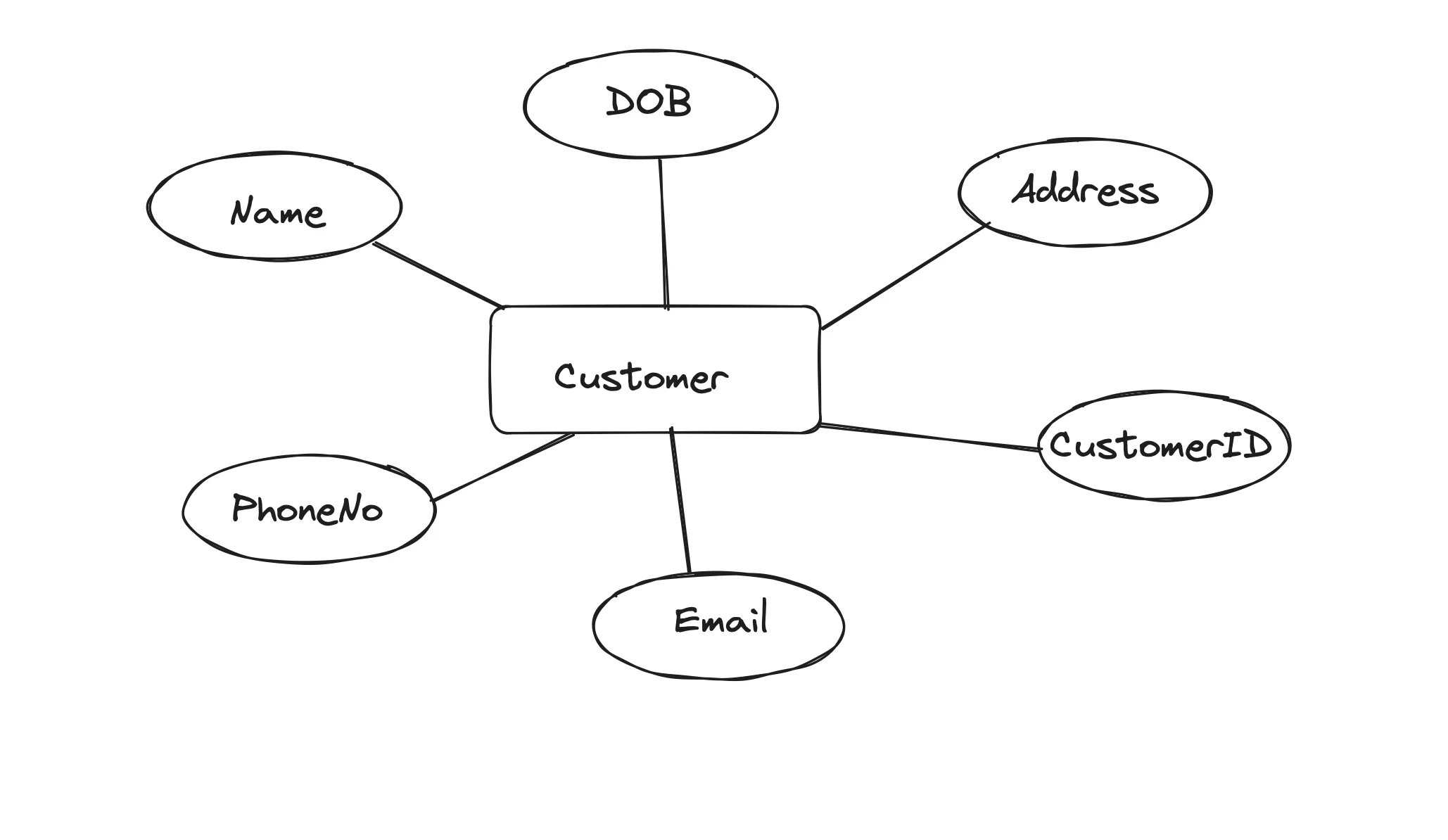
Example of an Entity Representation
The circular parts attached to the rectangle represent attributes, which are properties or characteristics of the entity.
Types of Entities
Strong Entity
A strong entity is one that exists independently. For example, a "Customer" can exist on its own in a database, having attributes like CustomerID, Name, and Address. These attributes uniquely identify each customer, making it a strong entity.
Weak Entity
A weak entity cannot exist independently and relies on a strong entity for its existence. For instance, an "Order" entity typically depends on a "Customer" entity. Without a customer, the order wouldn't make sense. Weak entities often have a partial key that, when combined with the key of a strong entity, uniquely identifies each instance.
Entity Set
An entity set is a collection of similar types of entities. For instance, the Customer entity set would include all customers within a database. Each row in the entity set represents an individual entity.
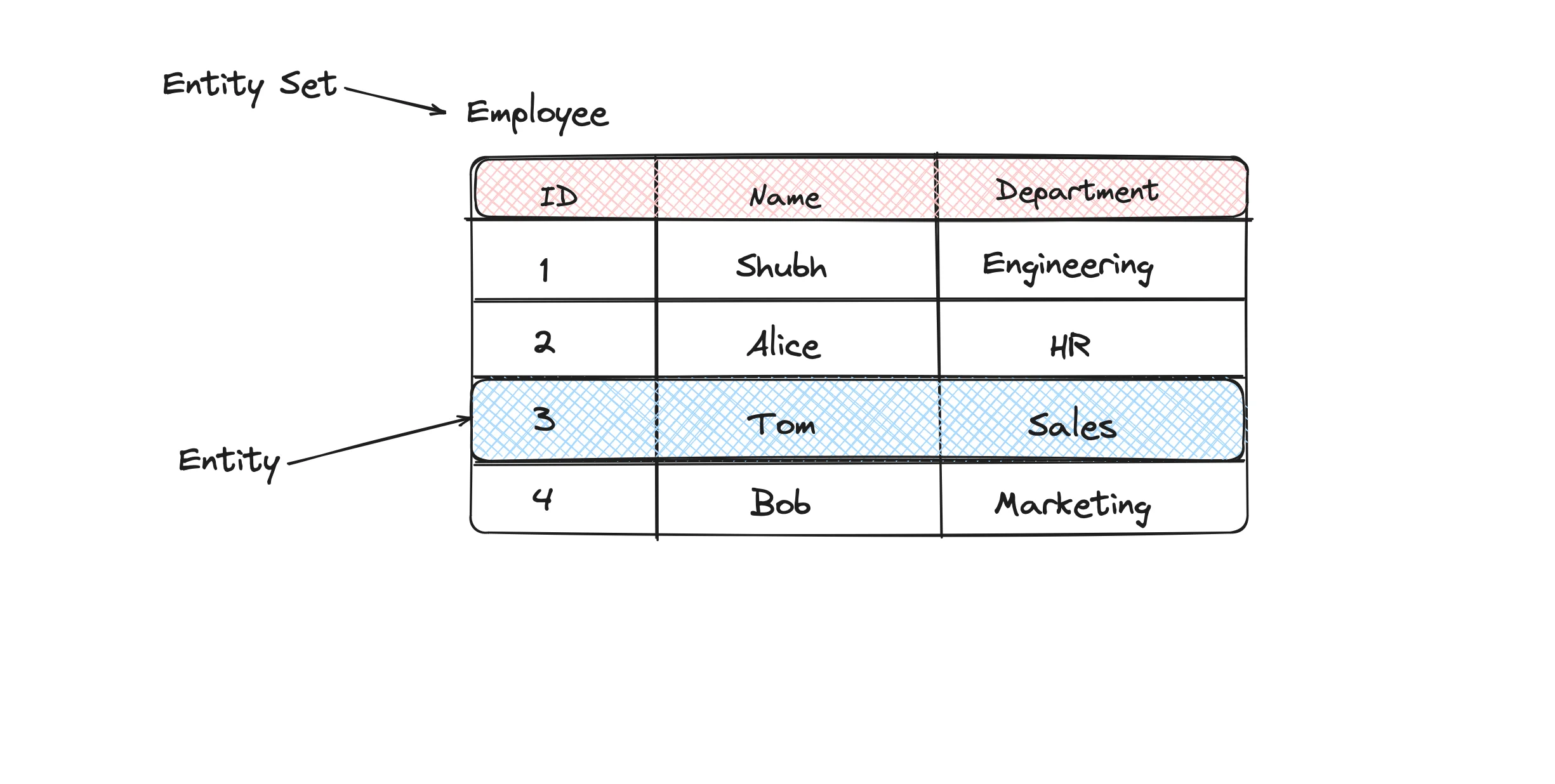
Representation of an Entity Set
Though entity set refers to the table, in practical terms, both "entity set" and "entity" are often used interchangeably to refer to the table itself.
Attributes
Attributes define the properties or characteristics of an entity. They are represented as ovals connected to their respective entity rectangles.
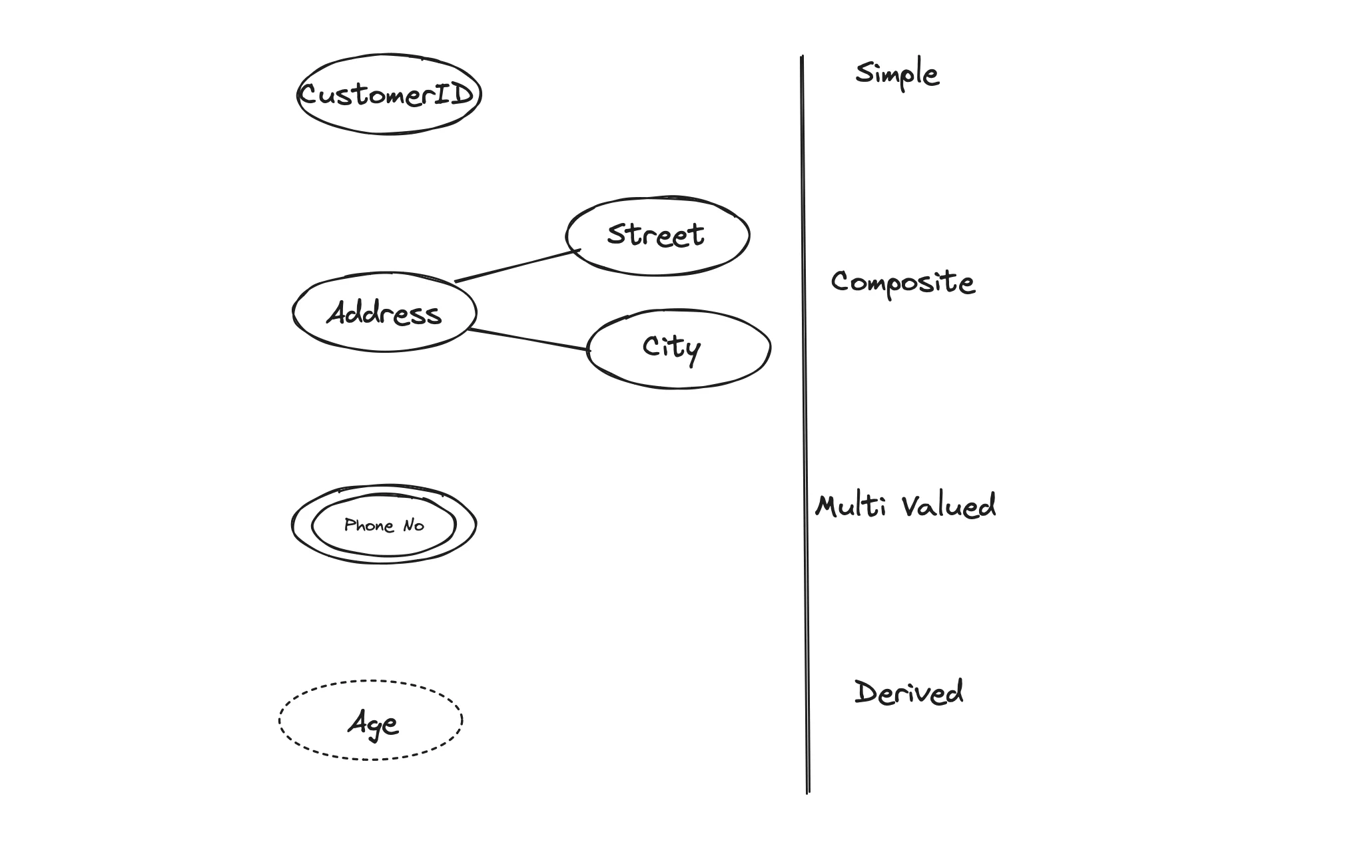
Types of Attributes in an ER Model
Common Types of Attributes
-
Simple: These attributes cannot be divided further. For example,
Ageis a simple attribute. -
Composite: Attributes that can be broken down into smaller parts. For instance, a
Nameattribute can be split intoFirst NameandLast Name. -
Single-Valued: Attributes that can hold only one value for each entity. For example, a
StudentIDis single-valued. -
Multi-Valued: Attributes that can have multiple values for each entity, such as
Phone Numbersof a student. -
Derived: Attributes whose values can be derived from other attributes, like calculating
AgefromDate of Birth. -
NULL: Represents missing or unknown information for an attribute.
Relationships
Relationships describe how entities are associated with each other. They are typically shown as diamond shapes connecting two or more entities. For instance, a "Teaches" relationship might connect "Teacher" and "Course" entities to show which teacher teaches which course.
Strong and Weak Relationships
-
Strong Relationship: Occurs when all participating entities are strong entities. For example, the relationship between
TeacherandCourseis strong because both entities can exist independently. -
Weak Relationship: Involves at least one weak entity. For example,
CustomerandOrderform a weak relationship becauseOrderdepends onCustomer.
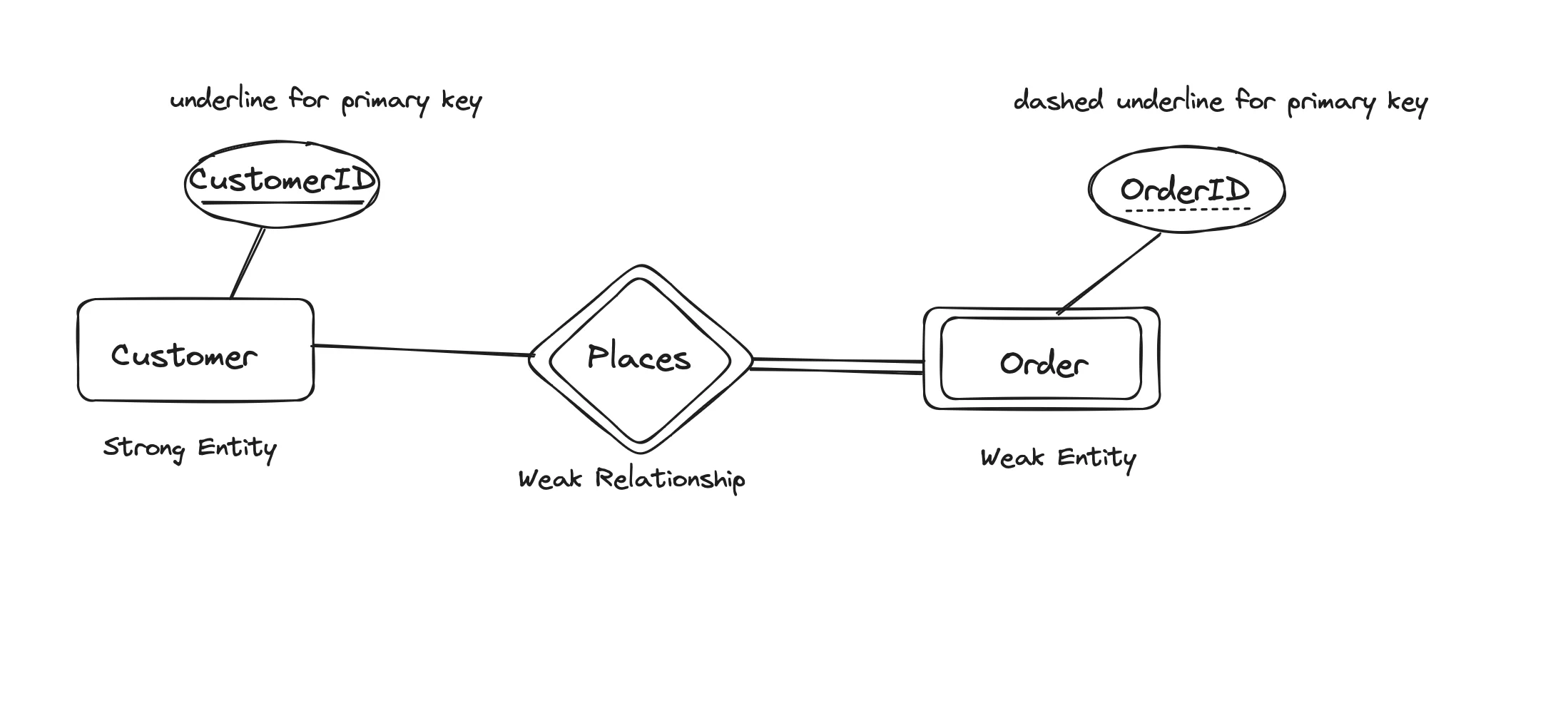
Example of a Weak Relationship
Degree of Relationship
-
Unary: A relationship involving only one entity, such as an employee managing itself.
-
Binary: Involves two different entities, like
Teacherteaching aCourse. -
Ternary: Involves three different entities, for instance, a
Teacherteaching aCourseto aStudent.
Relationship Constraints
Mapping Cardinality
Mapping cardinality defines the number of associations between entities through a relationship.
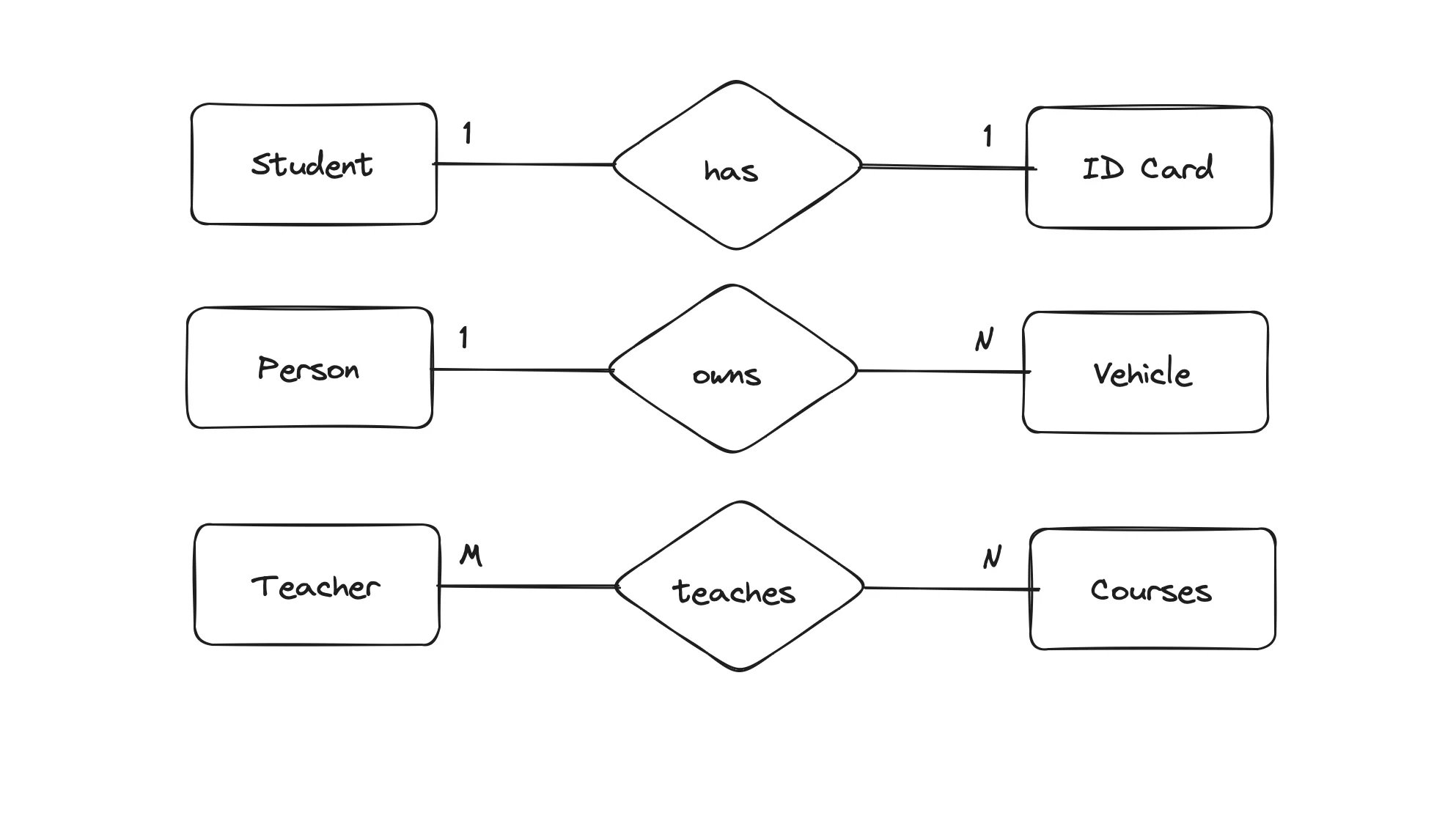
Types of Mapping Cardinality
-
One to One: Each student is assigned one unique ID card.
-
One to Many: One person can own multiple vehicles.
-
Many to One: Many employees work in one department.
-
Many to Many: A teacher can teach multiple courses, and a course can be taught by multiple teachers.
Participation Constraints
-
Total Participation: Every instance of an entity is involved in the relationship. For example, all loans are associated with some customer.
-
Partial Participation: Only some instances of an entity are involved. Some customers may not have any loans.
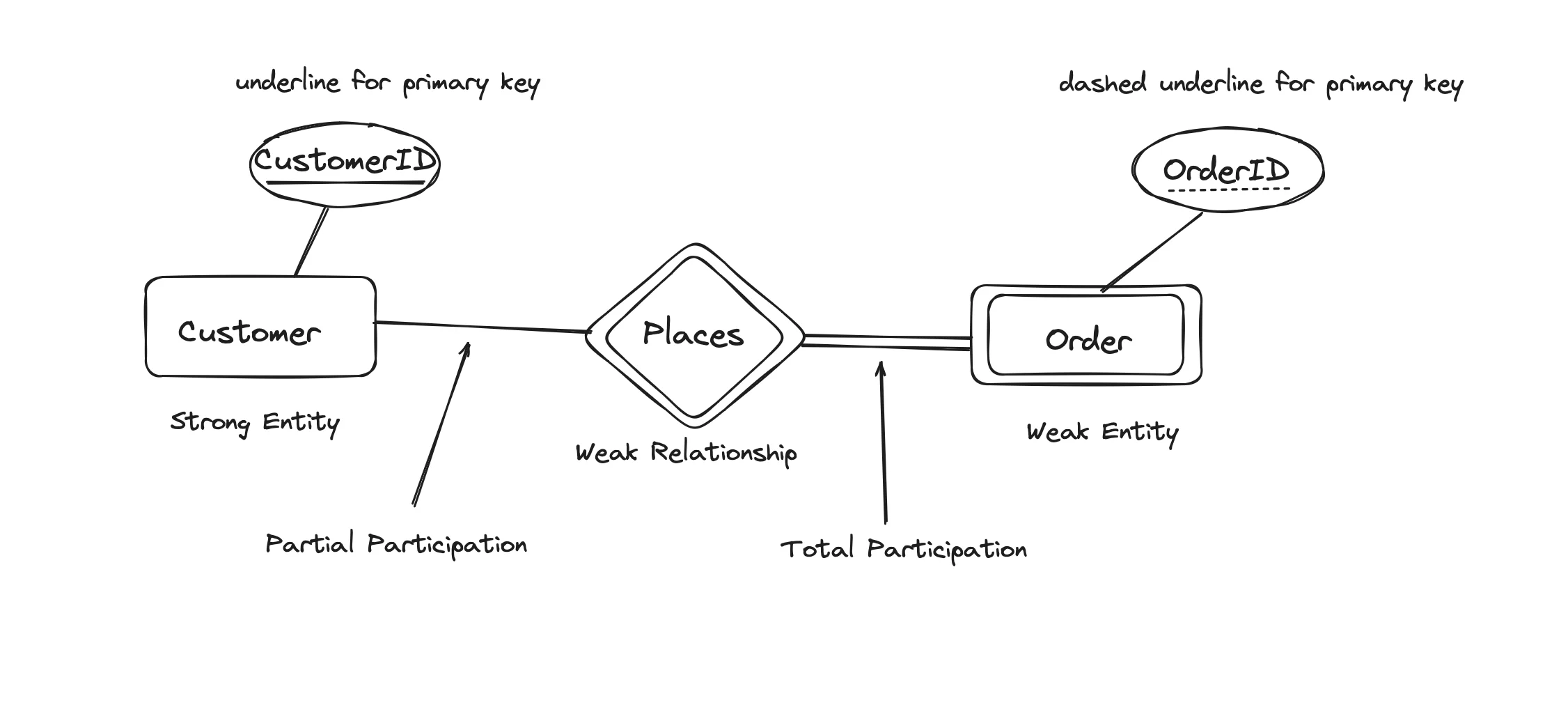
Example of Participation Constraints
Extended ER Features
Specialization
Specialization is the process of defining a set of subclasses of an entity type, where each subclass contains specific attributes and relationships unique to that subclass.
For instance, consider a Person entity that could be a Student or a Professor. Person holds common attributes like Name and Age, while Student has a Roll Number and Professor has a Salary.
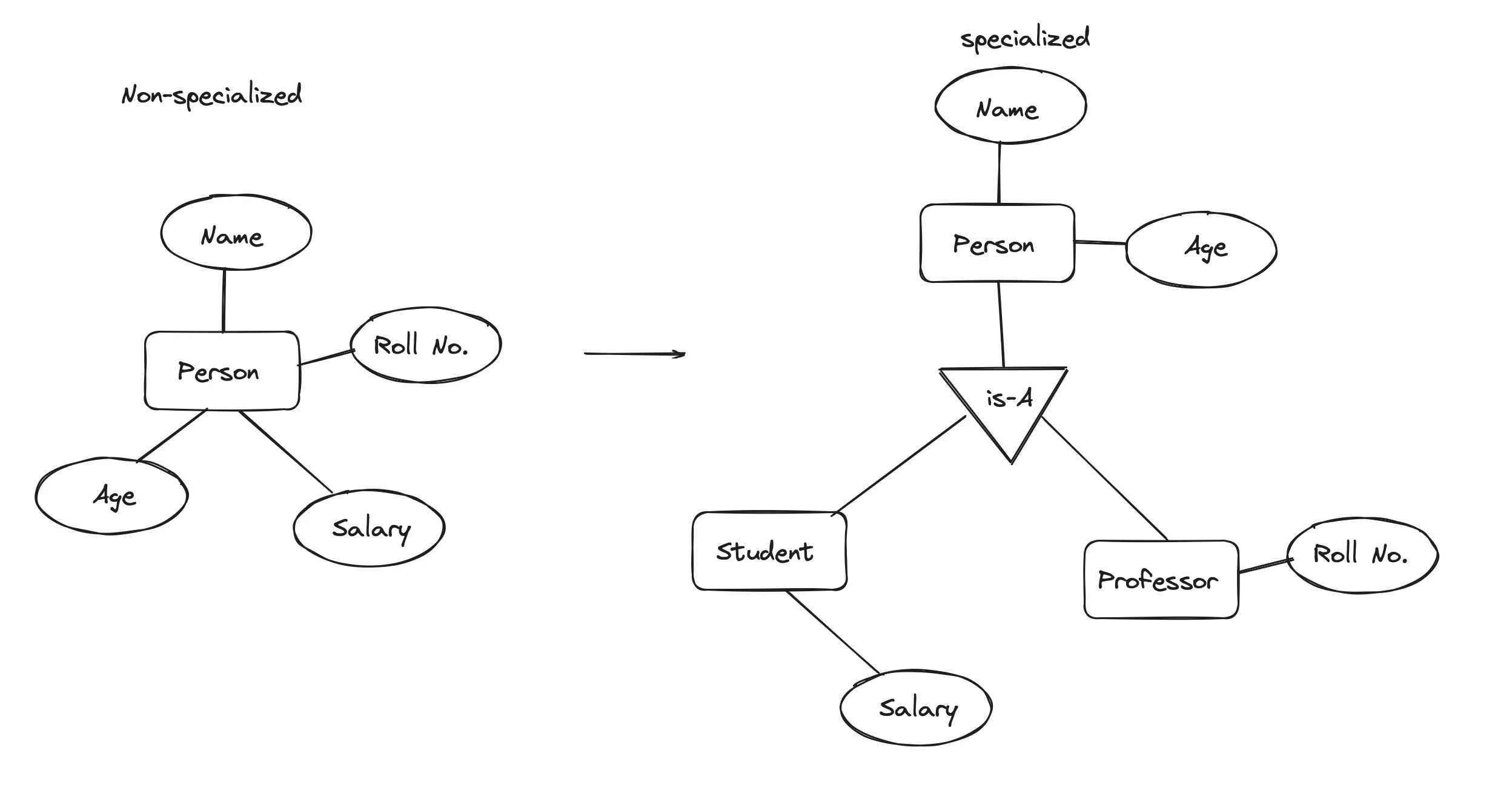
Example of Specialization
Specialization follows an isA relationship, similar to inheritance in object-oriented programming.
Generalization
Generalization combines multiple entity types into a higher-level entity that represents their common features.
Instead of starting with a general Person entity and specializing, you may begin with Student and Professor entities and realize they share common attributes, leading to the creation of a generalized Person entity.
Aggregation
Aggregation is a way to model a whole-part relationship between entities, simplifying complex relationships.
For example, consider an Employee works on a Project and needs a Machine. Instead of having multiple relationships (e.g., Employee-Machine, Project-Machine), aggregation allows combining Employee and Project into a higher-level entity to relate it to Machine.
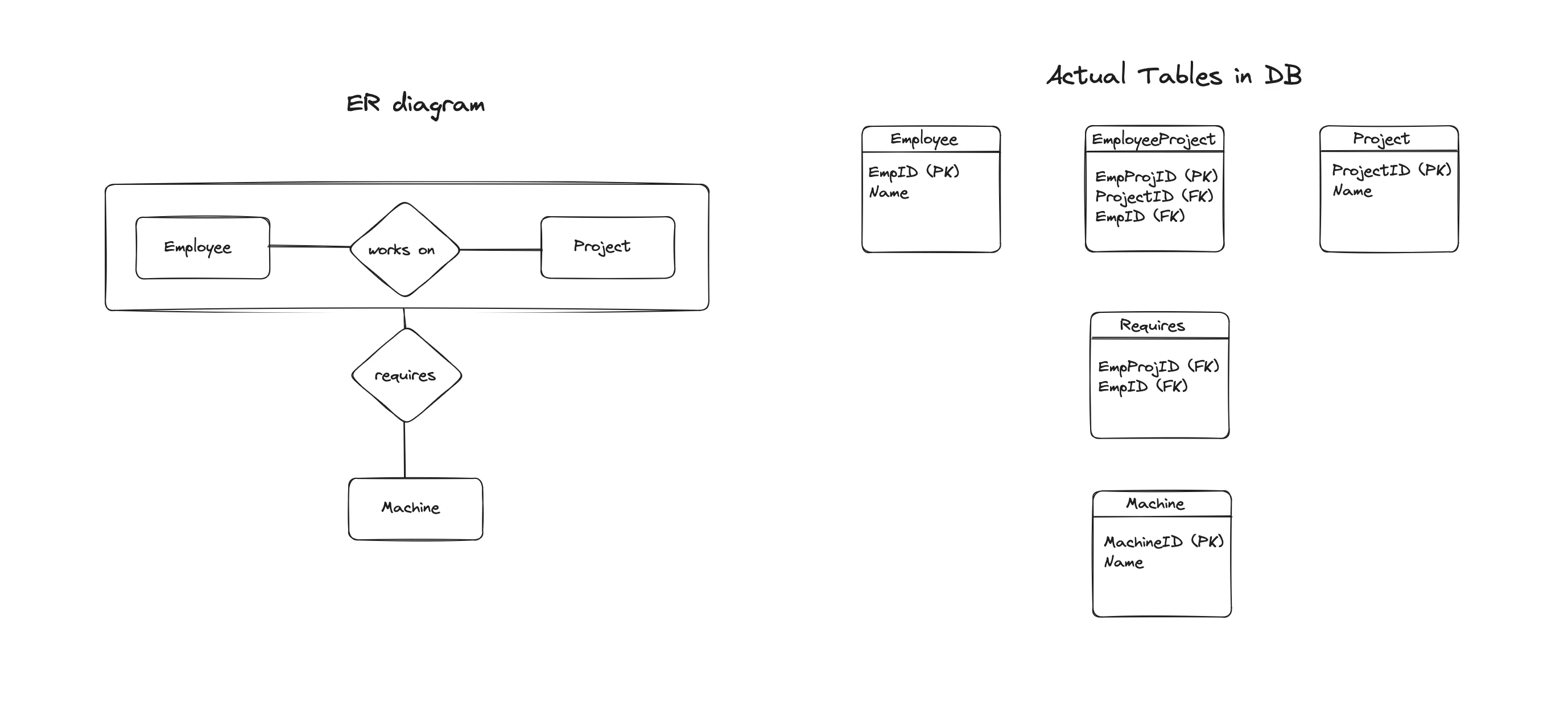
Example of Aggregation in ER Model
Aggregation is often described as a relationship between relationships, which typically involve two or more entities.